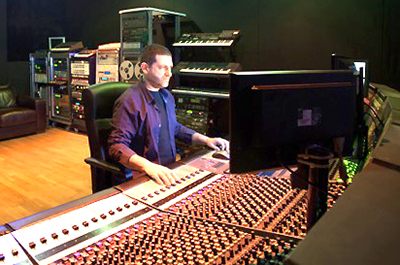Yoad Nevo’s credits include Pet Shop Boys’ ‘Yes’, Goldfrapp’s ‘Strict Machine’ and Sugababes’ ‘Freak Like Me’, as well hits with Sia, Moby, Morcheeba and the Dandy Warhols. More than 50 Top 10 albums prove his track record as a producer, mixer and plug-in developer, working from his London hub, Nevo Sound Studios. Key to Nevo’s quick, dynamic workflow is his DiGiGrid DLS, which multitasks in the studio just as much as the man himself.
 His current way of working allows him to split his day into many different segments: ‘I used to mix for a day, then come back in the morning for another half a day, and the mix was done – unless you had to do recalls, and that was a nightmare,’ he explains.
His current way of working allows him to split his day into many different segments: ‘I used to mix for a day, then come back in the morning for another half a day, and the mix was done – unless you had to do recalls, and that was a nightmare,’ he explains.
‘These days, I’ll spend two hours on something, then do something else – maybe some mastering – or listen to another mix, so it’s quite different to how things used to be. I find a lot of my time is spent listening to stuff, and making mental notes, because it’s so easy to manage the technical side of things. I have people here [at Nevo Sound Studios] to help edit and prepare the mixes for me, then when I come back here to the studio, it’s so easy to implement those notes.’
Nevo is quite old school, having worked on SSL desks for many years, and is a fan of Neve compression. He uses his Waves plug-ins to emulate those sounds in his mixes, and after the majority of the work has been done in the box, his final stage is to split the mix to different outputs, and run it through his Neve console for summing.
Nevo relies heavily on his DiGiGrid DLS set-up, which serves a number of purposes: ‘On one hand, it’s a super-powerful soundcard,’ he says. ‘With just one Ethernet cable connected to my computer, DiGiGrid drives all my HD I/O. However, it’s more than that. You can also connect it to another computer, and it can serve as the other computer’s soundcard as well, at the same time, without losing any of its resource. That, for me, makes it even more interesting, because then you can link all the computers in the studio using one DLS, and they can all talk to each other.’
This means if an artist is working in Pro Tools and another wants to bring in an Ableton session, linking it all up is straightforward: ‘They can just plug straight into the DLS via an Ethernet cable, and then Ableton becomes a part of your system too,’ Nevo explains. ‘So you can literally start recording with it right away. DLS really has proven to be a very smart piece of kit, and is now a key part of my studio workflow.’